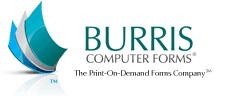Red Flags Rule: Do I need a Red Flags Rule Program?
by Chelsea Camper | Last Updated December 30, 2015One of your first questions after hearing about the Red Flags Rule is, “Do I need a plan?” In this post we’ll try to figure out whether you legally need one or not. Even if you’re not legally required to create a Red Flags Rule plan, it wouldn’t be a bad idea to create one anyway.
As mentioned in the previous post, the Red Flags Rule applies to “Financial Institutions” and “Creditors.” This includes anyone that, as defined by the FTC, “holds consumer accounts designed to permit multiple payments or transactions — or any other account for which there is a reasonably foreseeable risk of identity theft.”
Examples of Financial Institutions:
- State/National Banks
- State/Federal savings/loan associations
- Mutual savings banks
- State of federal credit unions
Examples of Creditors:
- Utilities
- Phone companies
- Businesses that provide loans or credit card extensions
- Finance companies
- Car dealers
However, many small businesses are exempt. Let’s take a quick look at the bill passed in December of 2010 amending the definition of a “creditor.”
1 ??(4) DEFINITIONS.?As used in this subsection,
2 the term ?creditor??
…
14 ??(iii) advances funds to or on behalf
15 of a person, based on an obligation of the
16 person to repay the funds or repayable
17 from specific property pledged by or on be
18 half of the person;
19 ??(B) does not include a creditor described
20 in subparagraph (A)(iii) that advances funds on
21 behalf of a person for expenses incidental to a
22 service provided by the creditor to that person;
In English, if you’re providing a service to the person you’re giving credit to (other than loaning them money) you are exempt.
An example being dentists: You go have your check up with your spouse and three kids. If the check up for each person is only $100, that’s $500 and you’re more than likely to put a down payment on it and then asked to be billed for it over the course of a few months. That dentist office wouldn’t need to comply to the Red Flags Rule because, while he is giving you a “credit line” at his dental office, he provided a service (checked on your family’s teeth) and the “credit line” is for you to finish paying him for that service.
If you’re unsure of whether or not your industry is exempt, the easiest way to find out is through a simple Google search (since there’s currently no list of exempt industries). Keeping in line with our above example, here’s a quick search to find out if the dentistry industry is exempt from the Red Flags Rule. Just replace “dentistry” with your industry and hit enter. There should be several links about whether or not your industry is exempt.
For more information about whether or not you need a Red Flags Rule Program, check out the FTC’s FAQ Question: Who’s Covered by the Red Flags Rule?.
You can also check out the rest of Burris’ Red Flags Rule Series.
Image: powerbooktrance




